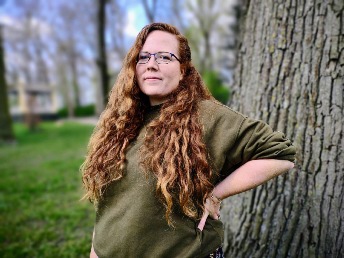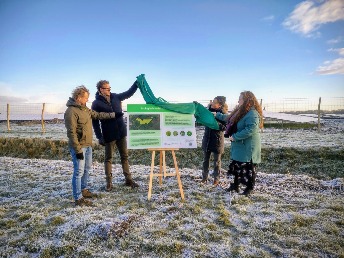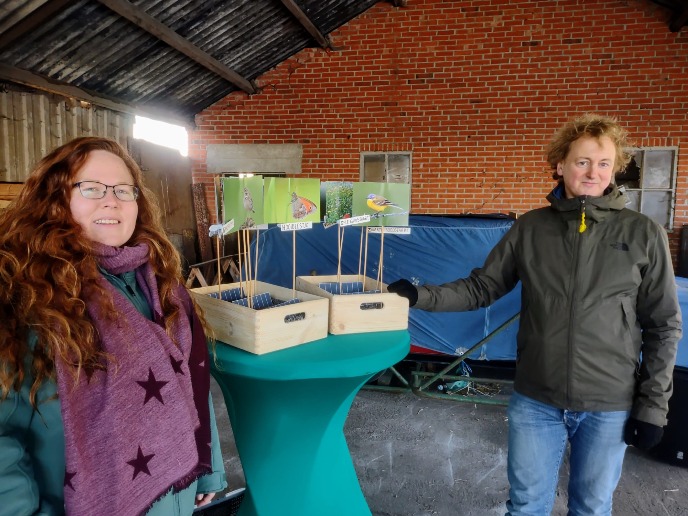Agricola Interview: Sylvia de Vries researches the ecological impact of solar parks
What effects does a solar park have on the ecology? What is the most nature-friendly way to construct a solar park? Biologist Sylvia de Vries hopes to answer these and many more questions in five years’ time. As a PhD student, she will study the construction of solar parks. This research is facilitated by a cooperation between Solarfields – which constructs solar parks – , the Groningen Provincial Executive and Sustainable Society of the University of Groningen.

Ms De Vries (32 years old) has been working as a biologist on arable land, farmland birds, and biodiversity for some time. She believes research into solar parks is interesting, as it is likely to produce practical, applicable knowledge: “At the moment, most solar parks are constructed in an intensively used agricultural landscape. With the appearance of solar panels, the use of pesticides and fertilisers disappears but also a surface area of habitat for farmland birds. How do you make sure that there is room for nature alongside room for solar panels in solar parks?”
To halt climate change, it is important to find sustainable ways of generating electricity. Solar energy can play an important role but its effects on nature are largely unknown. Are solar parks a threat to the species that currently inhabit the agricultural areas, such as farmland birds, or do they provide opportunities to strengthen their habitat? A possible solution may be to combine functions, where generating sustainable energy and biodiversity co-exist because of an ecological solar-park design. In solar park Roodehaan on the edge of the city of Groningen, Solarfields is taking measures to limit the negative ecological effects; they are an important financer of the research in order to learn whether this set-up has the desired effect.
Many questions
The official start of Sylvia De Vries’ research was on 1 June. She is supervised by the ecologist Dr Ir Raymond Klaassen of the University of Groningen. He is part of the Sustainable Landscapes research theme of Sustainable Society of the RUG.
Ms De Vries: “We will study several solar parks. The solar park in Roodehaan is likely to be the largest and is currently under construction. To know the starting situation, we performed a zero measurement already. This demonstrated that yellow wagtails and meadow pipits use the grassland that will house the solar park. Both species are farmland birds. Yellow wagtails love open spaces and breed in the middle of plots, whilst meadow pipits tend to seek out the edges. As biologist I am interested in how these species will respond to the construction of the solar park. I have lots of questions. What would be better for biodiversity: grazing or no grazing? To what extent do farmland birds use solar parks as a breeding habitat or a foraging area? What is the added value for biodiversity of a more spaced-out arrangement of the panels?”
An extra year of research
Before her research started, De Vries worked full-time for the foundation Stichting Grauwe Kiekendief – Kenniscentrum Akkervogels, a knowledge centre that works to protect farmland birds and on nature management. Alongside her PhD work, she will continue to work for the foundation one day a week. Ms De Vries: “That has the advantage that I can take five years to complete my research, a year longer than customary for a PhD. It also means I can track the developments in the solar park for a longer period of time and chart them better.”

Observe and count
Ms De Vries will not only track birds but the entire ecology. “Insects are an important part. During the zero measurement of the future solar park Roodehaan, it became clear that there is little diversity in ground beetles. You largely come across Rain-Beetles, which can occur in farmland in large numbers. When the plots are no longer fertilised, and the soil remains undisturbed, there will be grassland rich in herbs, and the ground-beetle community is likely to become more diverse with more species. Insects are also food for other animals, like mice, who in turn could attract other mammals or birds of prey. I will spend a lot of my working days counting. Besides charting the species that occur, we also want to know how a solar park is used by these species. We will fit small transmitters on birds to see which parts of a solar park they use or avoid. Like in nature, winter is more of a resting period, and that will be used to process all the collected data.”
Work on the basics
Sylvia De Vries’ research may have consequences for solar parks throughout the Netherlands. Ms De Vries: “There is a strong nation-wide focus on solar energy. Part of that can be generated on roofs, but it looks like many more solar parks will be built. That means you should have fact-based knowledge of the effects of the design of such a solar park. I think it is fabulously interesting and exciting that my research could make an important contribution to that knowledge.”
Partners
-
Solarfields
-
Groningen Provincial Executive
-
Rudolf Agricola School for Sustainable Development (RUG)

| Last modified: | 09 June 2023 4.52 p.m. |
More news
-
10 June 2024
Swarming around a skyscraper
Every two weeks, UG Makers puts the spotlight on a researcher who has created something tangible, ranging from homemade measuring equipment for academic research to small or larger products that can change our daily lives. That is how UG...
-
21 May 2024
Results of 2024 University elections
The votes have been counted and the results of the University elections are in!
